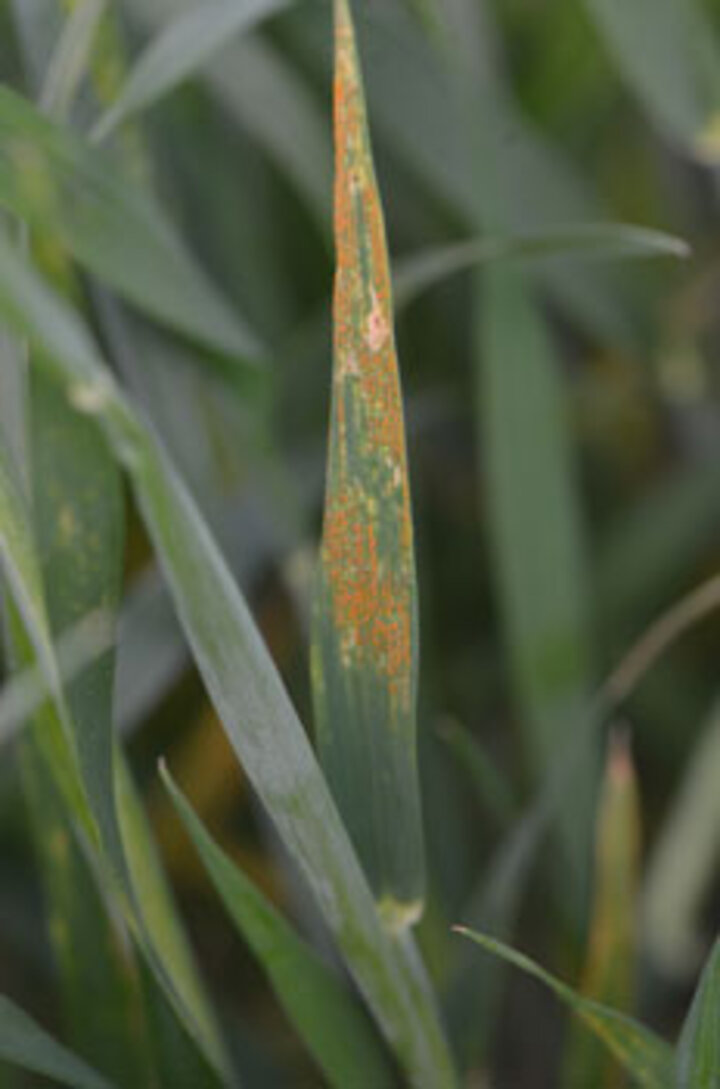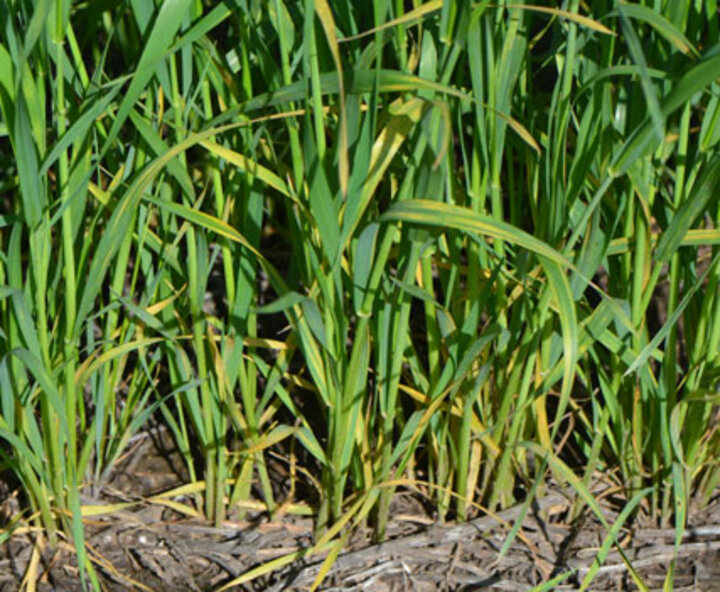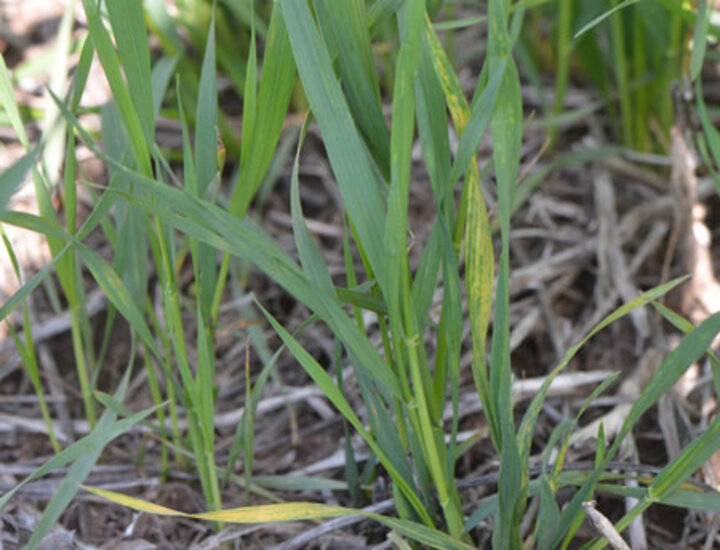

Figure 2. A hotspot of stripe rust in a wheat field in Webster County on May 7. The yellowing of leaves is due to stripe rust.
Wheat Disease Update

Figure 3. A wheat plant showing symptoms of wheat streak mosaic virus in a field in Webster County on May 7.

May 8, 2015
A survey of wheat fields in Webster and Nuckolls counties on May 7 showed that severity of stripe rust was generally still low but increasing (Figure 1). In one field there were visible hotspots (Figure 2) indicating that disease development is picking up speed. These hotspots serve as a source of spores that spread within the field and infect healthy plants. Current weather conditions (rainfall coupled with cool temperatures and wind) are favorable for stripe rust development and spread.
Other diseases observed at low levels were wheat streak mosaic virus (Figure 3) and Septoria tritici blotch (Figure 4) which was visible mainly on the lower leaves in a field that was at the heading growth stage. Wheat in most fields surveyed was at Feekes 8 (flag leaf just visible) to Feekes 9 (flag leaf emerged, its ligule/collar just visible).Management Continue scouting fields for stripe rust. If severity is low, it is best to wait until the flag leaf has emerged and then apply one fungicide spray to control stripe rust and other foliar fungal diseases (Septoria tritici blotch, tan spot, powdery mildew). If a fungicide is applied before flag leaf emergence, a second application may be needed to protect the flag leaf.
Virus diseases cannot be controlled once they occur. To control wheat streak mosaic virus during next year's growing season, control volunteer wheat before planting this fall.
Resources
For more information visit the Wheat section of Plant Disease Management in CropWatch.
Stephen WeguloExtension Plant Pathologist
